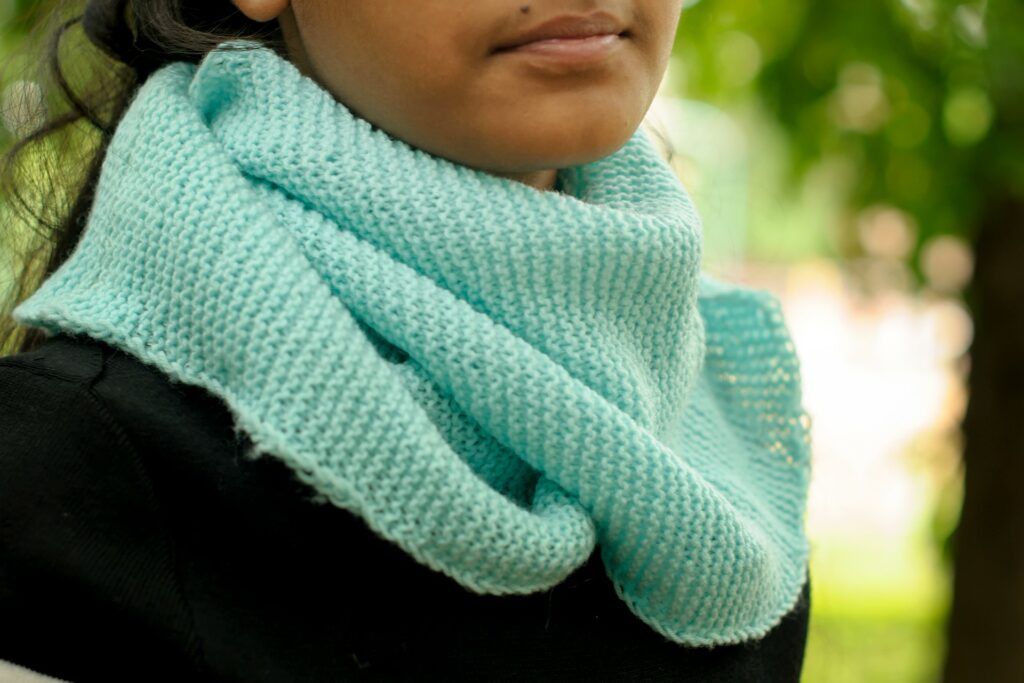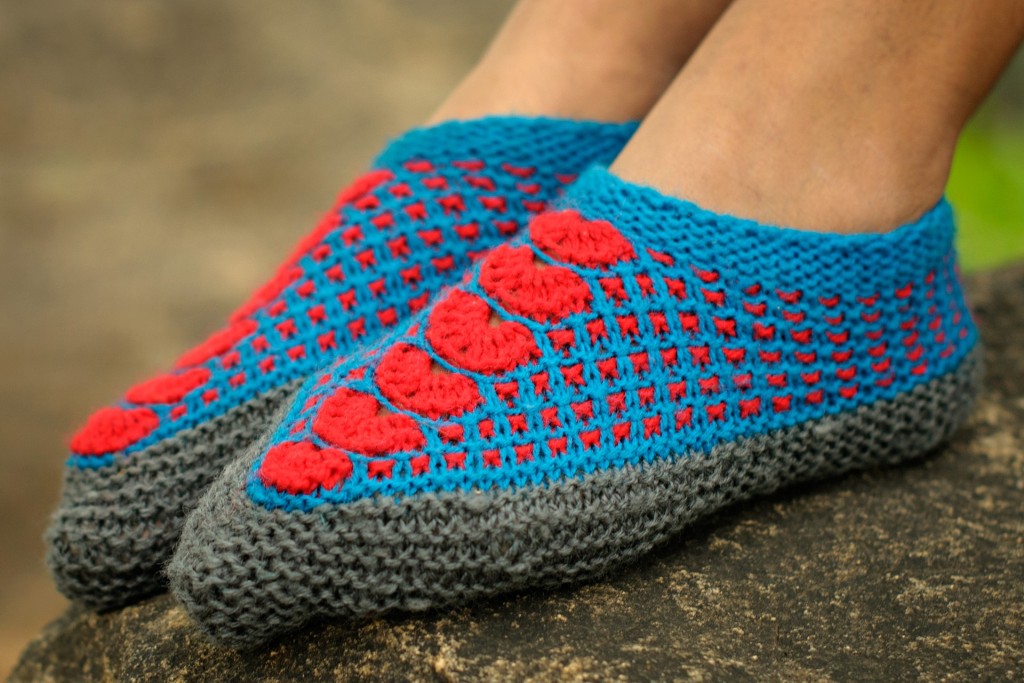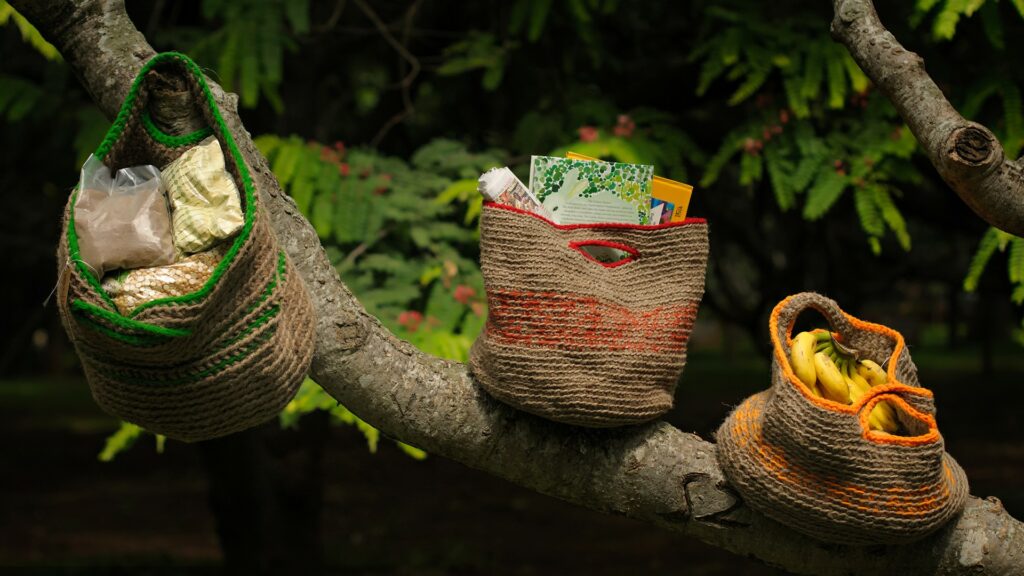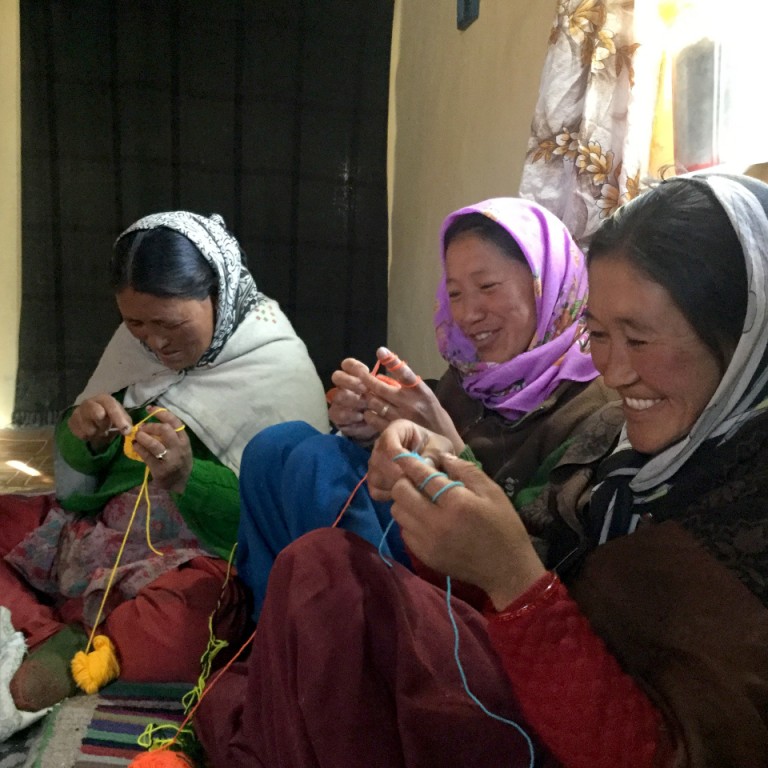
Sonam wakes up early in the morning. It is still dark outside as she emerges from the warm, heavy blankets and rekindles the fire in the bukhari (a traditional fire place in the house).
She feeds the dzomo (female yak-cow hybrid) and her calf — both sharing her home due to the freezing January cold — stalks left over from the harvest. Outside, she watches the sun rise over the stark landscape, casting a golden hue on the peaks, sunlight slowly making its way down to the village rooftops. There are no trees to break the white monotony: the entire village of 70 houses is sparkling white and frozen solid. At 4,200m, Kibber in the Spiti Valley of Himachal Pradesh, is one of the highest villages in the world, and has been home to the Sino-Tibetan-speaking agro-pastoral communities and their livestock for several millennia.
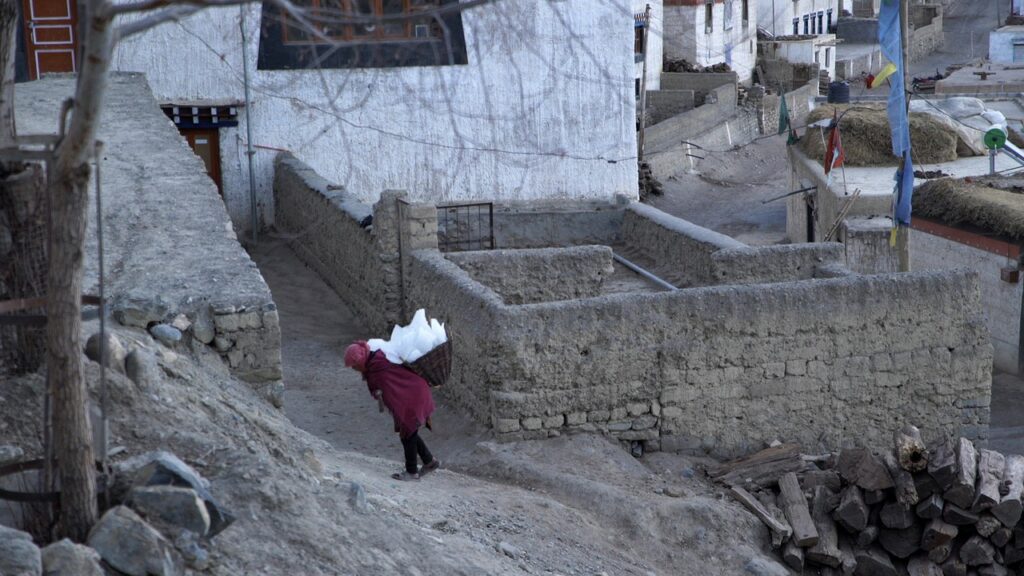
After the dzomo has been fed, Sonam leaves to fill two cans with water for her home. There is no running water in Kibber through the year, and in winter, she has to walk even further to the only spring that isn’t frozen over. By the time she gets back, her youngest child, barely a year old, is awake and crying for his mother. She gently lifts him up and ties him to her back with her shawl, and as the comforting contact quietens him, she prepares the first cups of barley soup and tea. She would normally head to the gompa (monastery) after that; the people in Spiti are predominantly Buddhist, and Sonam would spend the day learning how to read the religious texts or take part in the prayers that take place throughout winter.
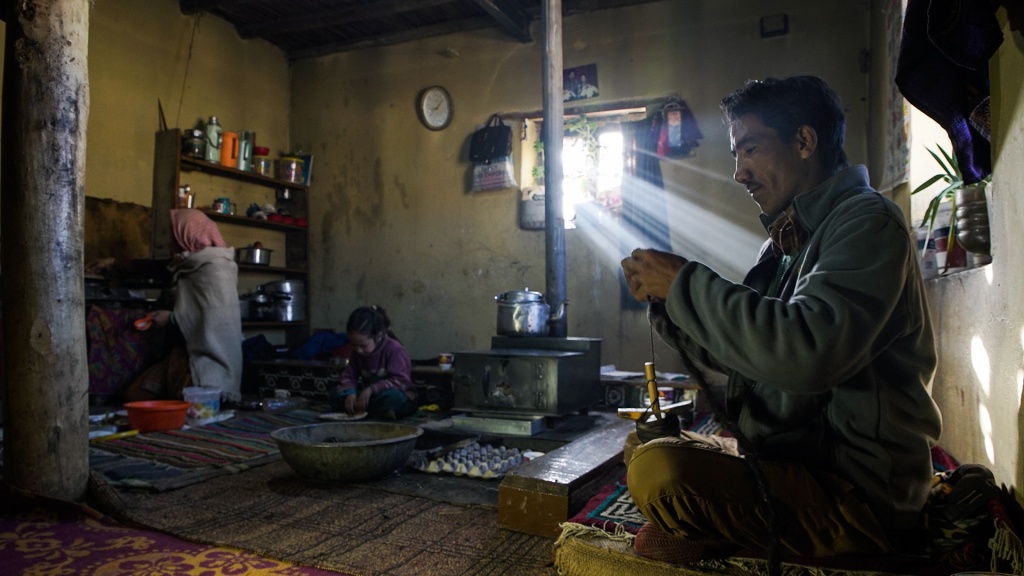
Today, however, she will do neither. She is on her way to her neighbour’s house to learn how to crochet. She is excited to sit around the bukhari, spend the day drinking endless cups of tea and learning something new. Sonam is one of the founders of the Ama Chokspa self-help group that makes and sells handicrafts to supplement income. The group operates under the umbrella of ‘SHEN’, a conservation enterprise that was initiated by Nature Conservation Foundation (NCF) in 2013. SHEN — which means Snow Leopard in Spitian (a dialect of Tibetan) — is a pilot project that aims at empowering the women of Kibber and Chicham villages.
According to the 2011 census, the population density of the district of Lahaul and Spiti is two inhabitants per square kilometre, making it one of the least densely populated regions in India. Other than the intrepid tourist, the local communities share their spectacular landscape with a unique assemblage of wildlife, including the elusive Snow Leopard, wolf, agile wild ungulates like bharal and ibex, pika, Golden Eagle and the majestic lammergeyer. Despite the low population density, people, livestock and wildlife use every accessible portion of this landscape extensively, causing intense competition for pastureland. In these landscapes, livestock density is often 10 times higher than that of wild ungulates, far outcompeting the latter. As a result, predators such as Snow Leopards have a high dependence on livestock for food, sometimes leading to significant economic losses for the local community.
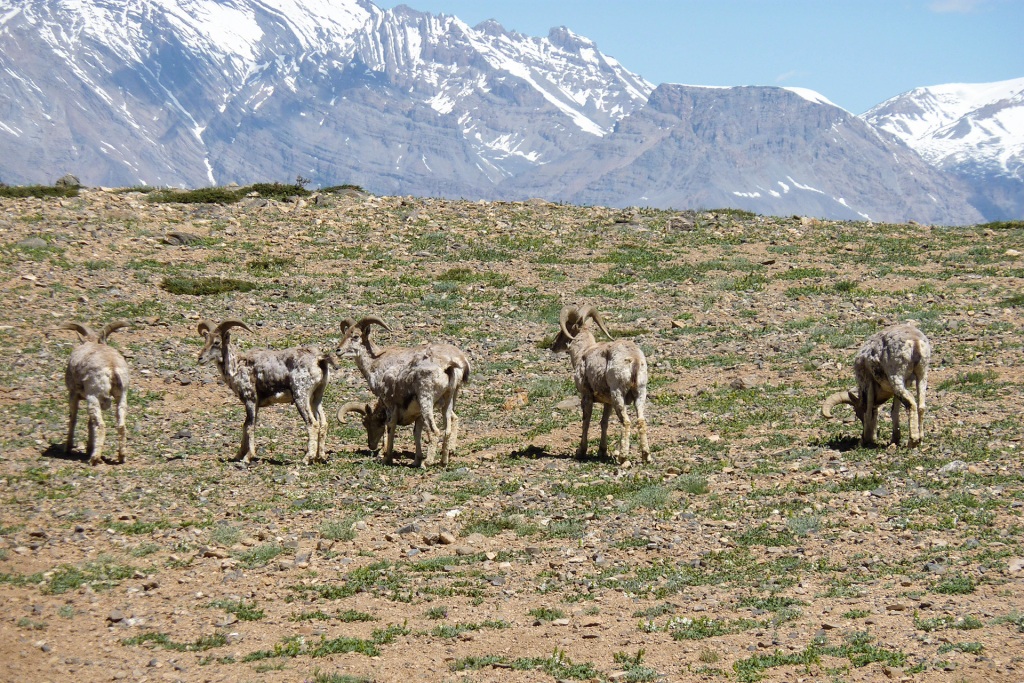
In view of this human-wildlife conflict, NCF’s Kulbhushansingh Suryawanshi designed a study to understand people’s attitudes towards predators such as snow leopards and wolves in Spiti Valley.
Interestingly, he found that women had relatively higher negative attitudes towards Snow Leopards and wolves than men did. Initial conversations led us to believe that this was because women spent more time in the fields with their livestock and were hence, more attached to them, but this would need further research.
Another study by Monica Ogra in Uttarakhand suggests that there are indirect costs to conflict with wildlife, which may be borne disproportionately by women. For example, women have to make more trips to the forest to collect firewood, making them an easy target for predators. There are many reasons attributed to women having less positive attitudes to wildlife: from feeling more at risk and having limited access to knowledge to negligible interaction with conservation issues and agencies as compared to men.
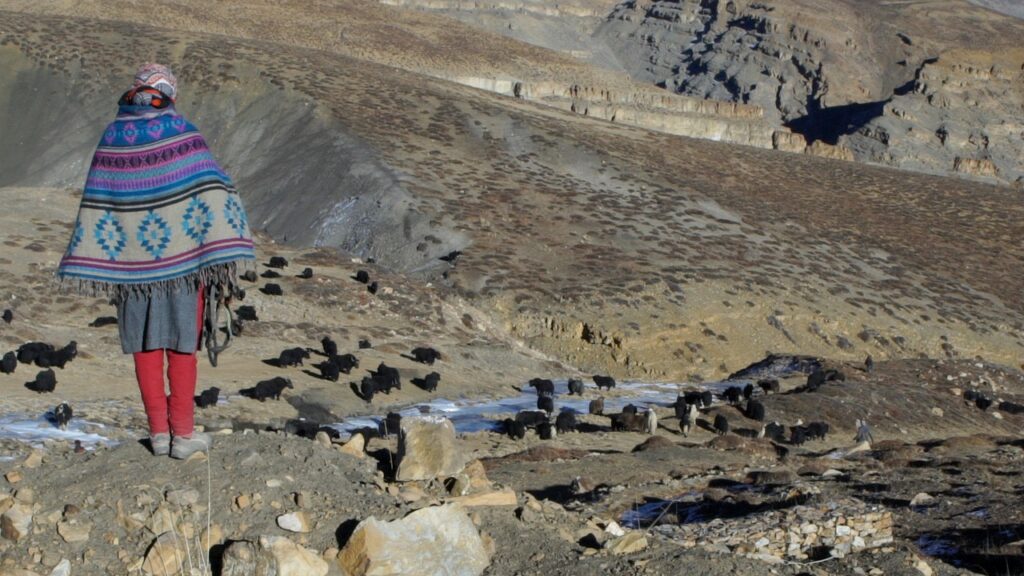
After years of working in this field, I am convinced that for grassroots conservation projects to succeed, active participation from women is essential.
Without this, benefits related to conservation will be unequally distributed, further contributing to social injustice. It is almost self-evident — and research backs this — that a new project without the support of half the population may be less effective.
When projects are implemented in remote regions like Spiti, women like Sonam can be excluded for a variety of reasons, sometimes simply by oversight; women work from dawn to dusk in summer so only their male counterparts are available at meetings. An extra effort needs to be made to include women and understand their needs and priorities. Women do have more free time in winter, but how many projects are started at -20°C, often with road blockages and avalanches? Due to cultural reasons, women may participate in mahila mandal meetings and influence decisions in the household but may not be invited to village-level or conservation committee meetings. Even when invited, they are often mute observers. This varies widely in different parts of the country — there are women leading environmental movements in some areas, while in others their presence is not tolerated.
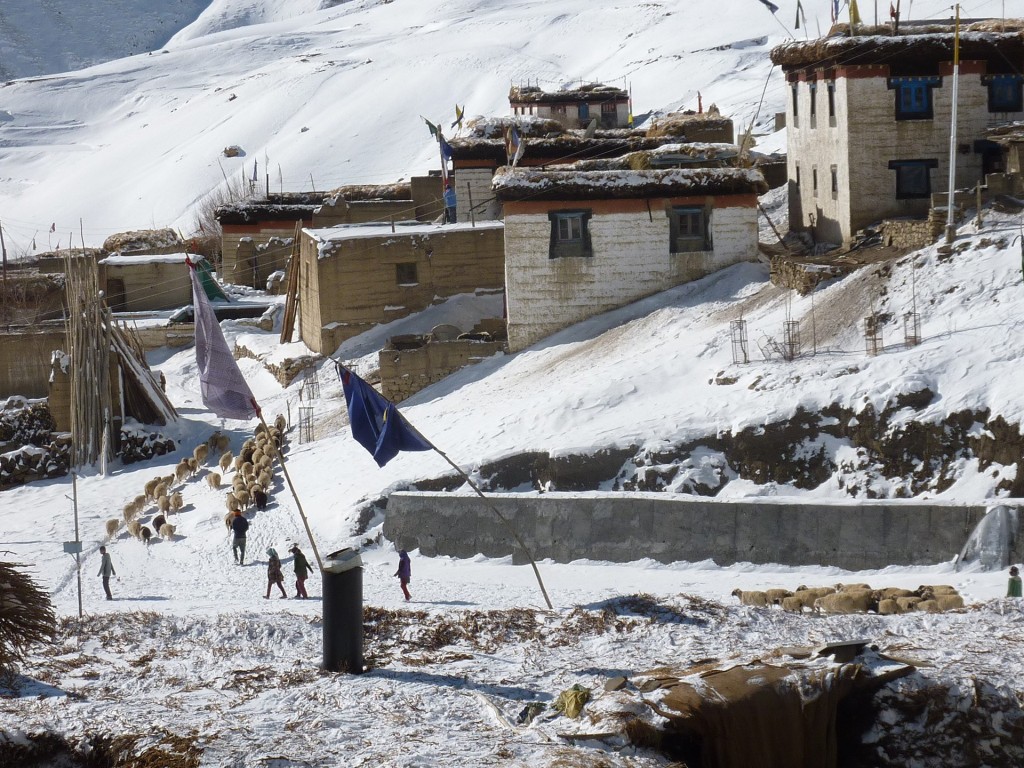
So how does one solve the problem of exclusion? This is where SHEN fits in, with a primary goal to include women in conservation and provide them with an additional income while doing so. It is rather like an elaborate ‘ice breaker’, which lets them participate in a socially safe activity (making and selling handicrafts) while engaging them in deeper conversation about wildlife conservation.
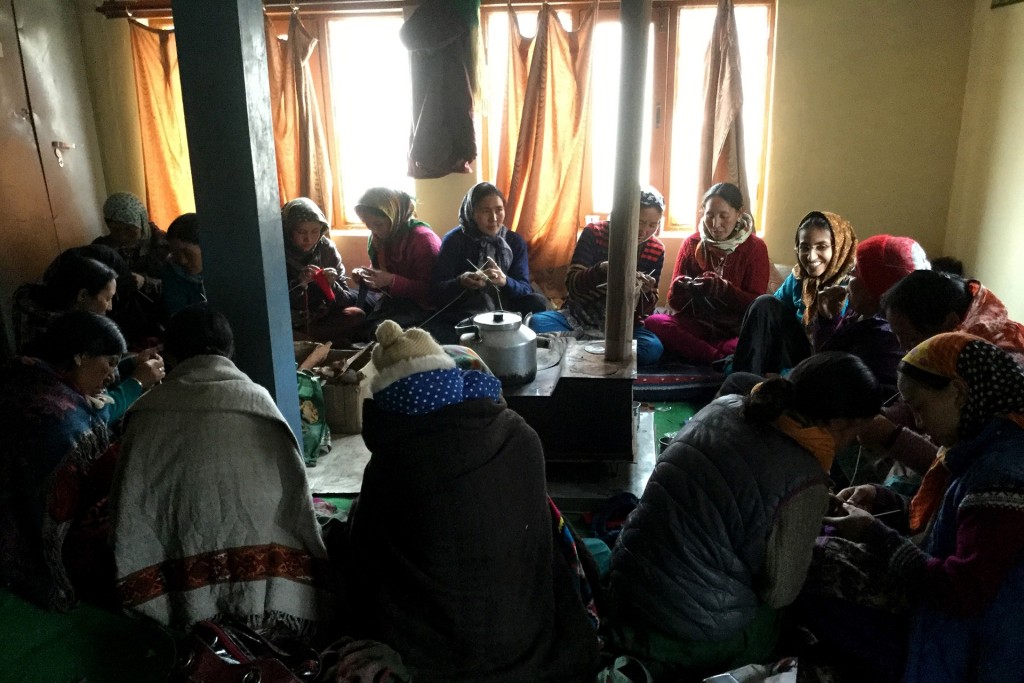
As a first step to bind the enterprise to wildlife conservation, we included a ‘conservation bonus’ at the end of the year, which is tied to activities realised during the year. In a country like Mongolia — where a similar programme, Snow Leopard Enterprises, has been running successfully for over a decade — poaching was a very strong concern, so it made sense to tie the bonus to ‘no poaching’. Here, where villagers are not involved in poaching, we found the women taking ownership of their wildlife and landscape. They began to pre-emptively let non-local labourers know that poaching is illegal. Our next step would be to involve the women slowly and steadily, under the umbrella of SHEN, directly into conservation activities and decision-making. If we could tie this to a strong education and awareness programme, Shen would become a truly-inclusive, wildlife-friendly, conservation enterprise.
It has been challenging, but rewarding to start and run this initiative in a remote and resource-poor landscape over the last three years. It has been difficult finding trainers willing to teach in freezing temperatures with no indoor toilets, running water and having to contend with high-altitude sickness.
For me, learning, laughing, dancing, partying and sometimes weeping with these women in Kibber and Chicham has been an incomparably enriching experience. They are strong with a mischievous sense of humour and an immense capacity for love and acceptance.
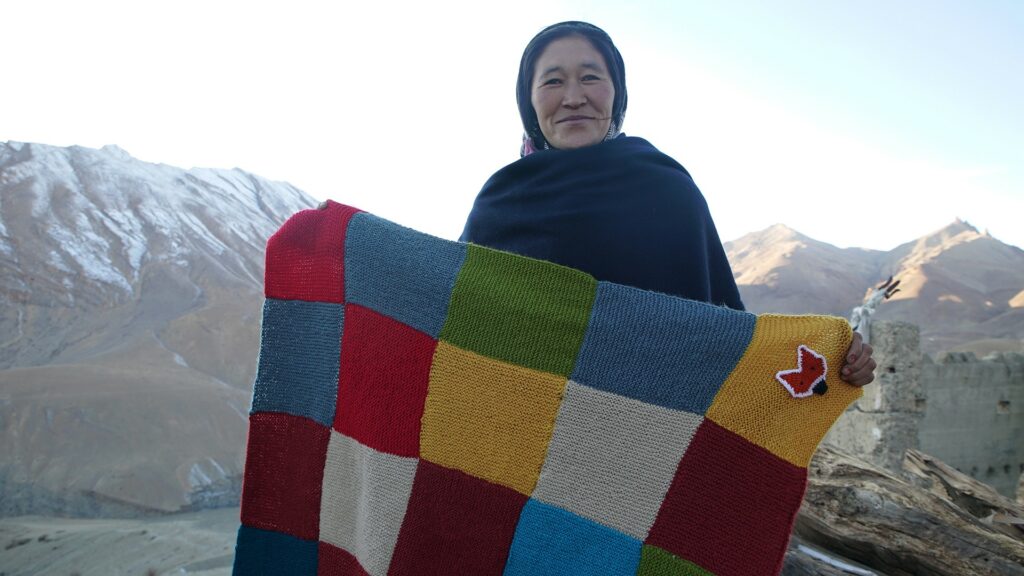
I remember the first time they received a payment for making handicrafts with SHEN. We were sitting in the living room around the fire on lush red carpets with geometrical Tibetan designs. It began snowing outside just as we started making momos for the party we were throwing for ourselves. I said to Sonam — and a few other women who were present — ‘You know, this isn’t a lot of money. I hope as we grow the remuneration will increase.’
I learned then that their motivations to participate were different from our initial assumptions — they were not here only for the additional income but also for the opportunity to learn new skills, travel and feel like a cohesive group. With that first payment, the women from Kibber went on a trip to Trilokinath, a Buddhist pilgrimage destination.
In January last year, one cold and snowy night, a Snow Leopard entered a corral outside Sonam’s house and killed 15 sheep. But contrary to the anger and the desire for retaliatory killings that one would expect after such incidents, I was moved by her exceptional tolerance and compassion when I spoke to her about it months later. ‘This is the season when the Snow Leopard has cubs and also needs food. What can you do? How can you blame her?’
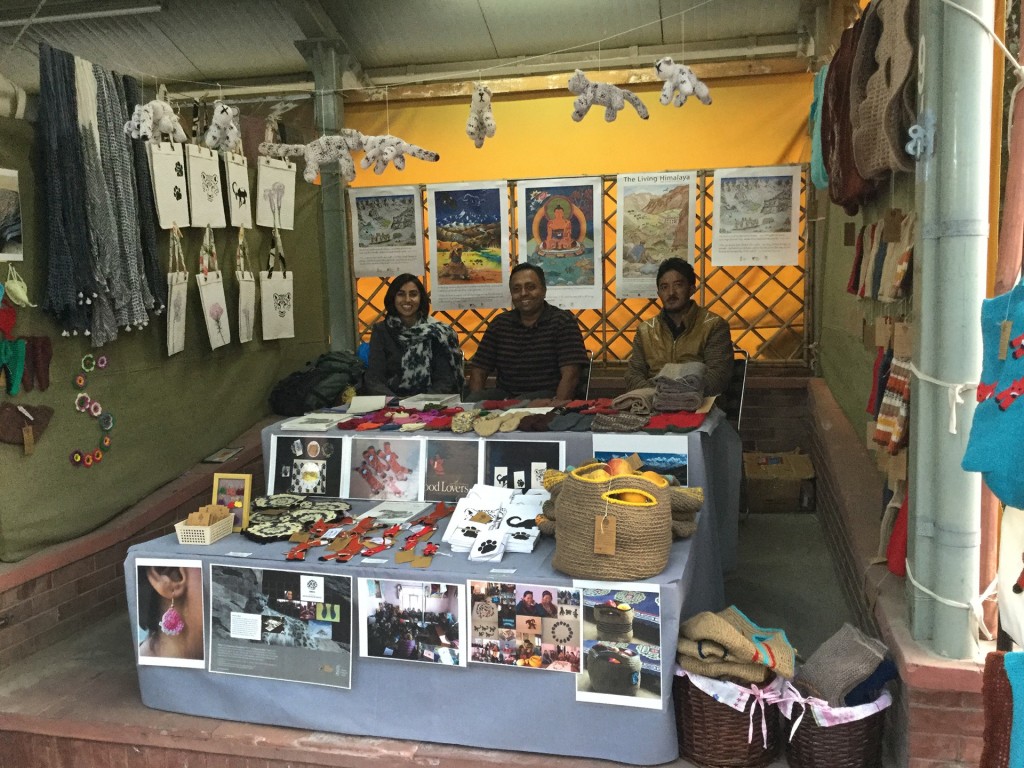
Note: Sonam’s real name has been withheld to protect her identity.
First published by Nature in Focus


